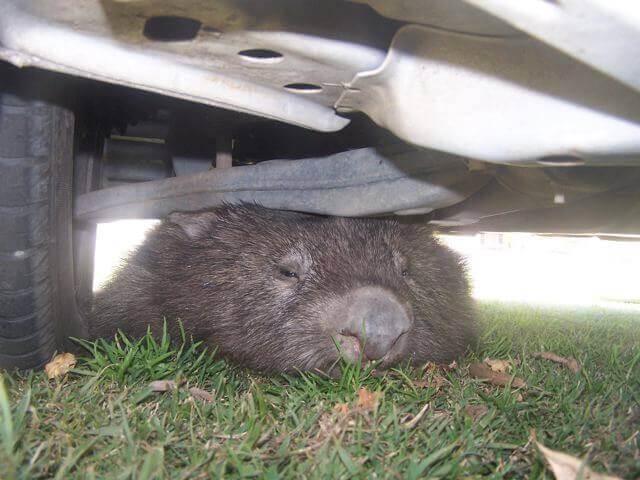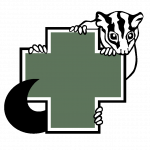RESCUE ADVICE
Wombats
Mostly nocturnal, wombats usually come out at night for between 3 to 8 hours to graze. In colder periods they may sometimes be seen during the day either grazing or basking in the sun.
Wombats are marsupials with a pouch that faces backwards so no dirt gets in when it is burrowing. They are herbivorous, feeding on native plants and roots, bark and grasses. This causes its teeth to wear away rapidly but its teeth continue to grow throughout its life. Wombats normally live for 10-15 years in the wild and have been known to live up to 20 years in captivity.
If you find an injured or sick wombat, please call our 24/7 Rescue Line on 0418 628 483. It is operated by volunteers at WIRES. They will alert our team and a trained rescuer will be out as soon as possible.
Rescue Advice
Never approach an injured wombat. They have sharp claws and teeth and can run up to 40km/h. Take note of what is wrong and the exact location of the animal and call Hunter Wildlife Rescue on 0418 628 483. Our Rescue Line is operated 24/7 by our friends at WIRES. They will alert our team and a trained rescuer with the correct PPE and equipment will attend as soon as possible.
If you can spare the time, watch the animal until a rescuer arrives. If we can’t find it, we can’t help it.
Important To Note
- When handling all wombats, including joeys, and treat all wombats as if they have mange.
- Use a barrier technique – wear gloves, don’t hold the wombat against the body without a plastic sheet between you and the wombat and the joey in the pouch.
- Don’t be tempted to put a joey down inside your shirt to keep it warm – this is a very effective way to catch mange.
- ALL wombats with mange should come into care so they can receive treatment to ensure that the disease does not spread more,
- Keep the wombat cool. Wombats are nocturnal, burrowing animals – they do not tolerate temperatures above 28 o C. Under no circumstances should they ever be left in the hot sun or in a hot car.
- If it is safe to do so, remove deceased wombats from the road and perform a pouch check if the animal is female
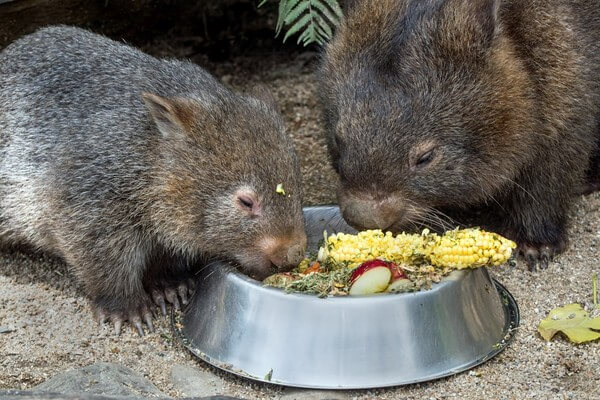
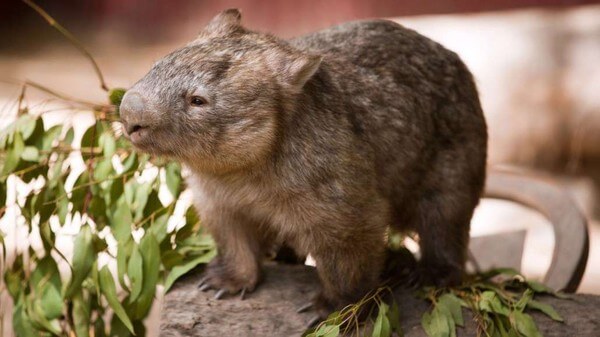
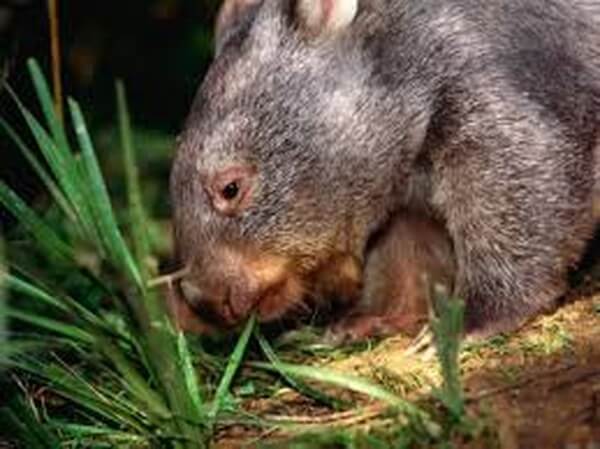
Wombat Joeys
The joey will leave the pouch at 10 months but will stay with the mother for another 8 to 10 months. If you find a dead wombat, please check the pouch if you feel comfortable doing so. Read our pouch checking guide for step-by-step instructions.
If you find a joey, it will need to come into care prior to release.
- Place the joey in a secure environment e.g. a pillowcase or wrap in a towel
- Check if it has fur and if it feels cold to touch. If it is cold or has no fur, place a bottle filled with warm water or a hot water bottle, filled with hot tap water only – not too hot
- Wrap the bottle in a cloth, next to, never underneath the joey
Many orphaned wombats, found in their mother’s pouch, are brought into Hunter Wildlife carers every year. These baby wombats need extensive specialised care for up to 12 months, including being bottle fed every four hours. They are then released into a soft-release area where they can learn to be wild wombats over the following 6 months before being ready for release.
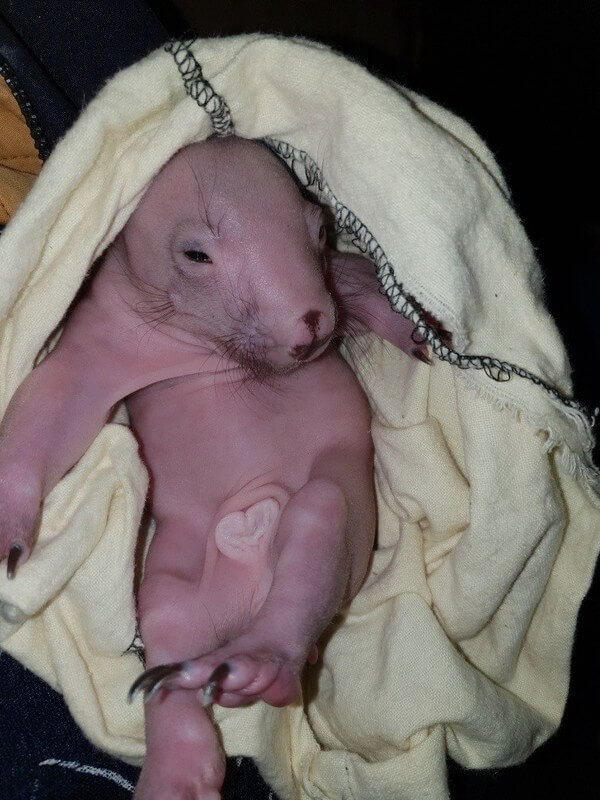
Wombats Are Not Pets
This video is about wombats and the problems caused by members of the public trying to make wombats into pets. This video contains excellent information about the problems associated with members of the public taking wombats in to have as a pet. It is worth a look to find out a little bit more about wombats.
Threats To Wombats
Unfortunately its not uncommon to see a dead wombat by the side of the road who has fallen victim to road accidents. The introduction of the rabbit and excessive clearing for livestock and agriculture has had a devastating effect on numbers. Today wombats continue to be trapped, shot and baited by farmers who consider them to be pests because they can burrow under fences and dig in cultivated fields and pastures and also their burrows can harbour rabbits.
The most common reasons for wombat rescues are:
- Hit by car
- Dogs attacks and shooters
- Bushfires and floods have a major impact on these animals
- Wombats are suffering from the terrible disease of mange
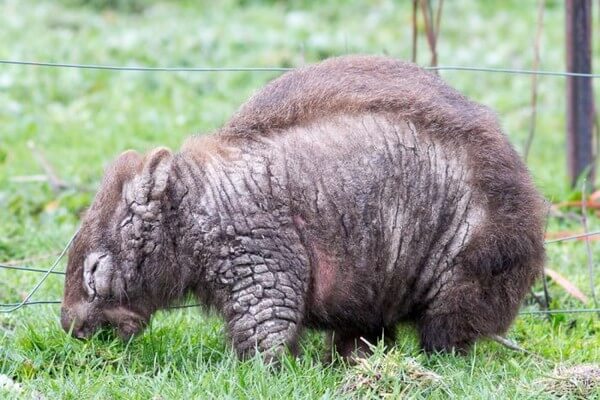
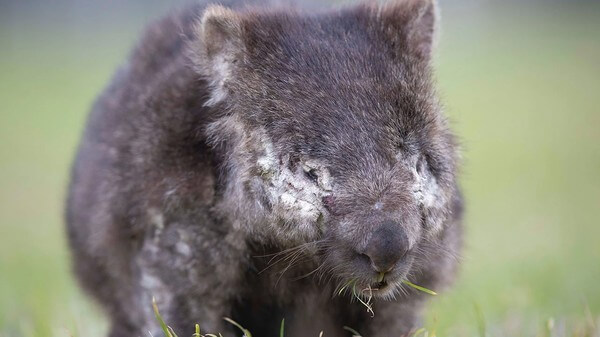
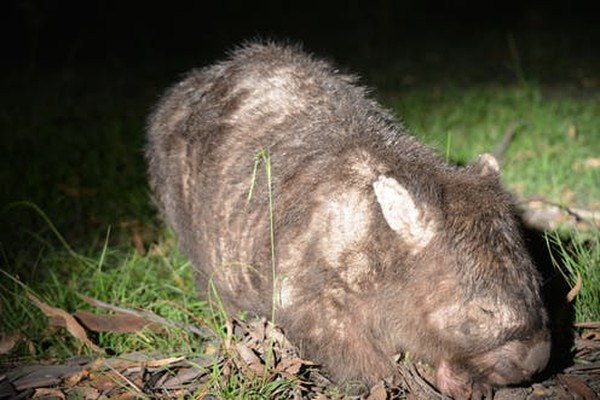
Wombats in the Hunter
The Common Wombat or Bare-Nosed Wombat has coarse, stiff grey/brown fur and a hair-free muzzle. Often their true colour is hidden by the dirt or clay in which they have been digging. It has small rounded ears, small eyes, a broad, flattened head with a short muscular neck.
There is one incisor tooth on each side of both upper and lower jaws. Its teeth are rootless, they keep growing, so even when older they are still able to finely grind their food.
Their large, heavy bodies average 1 metre in length, the tail, which is hidden in their fur, is only a couple of centimetres long. They can weigh up to 40 kg, although 30 kg is more common.
The rump of the wombat has a very tough, thick skin. If threatened, a wombat will dive into a nearby burrow or hollow log and use its rump in self-defence for trapping and crushing intruders in their burrows. They are strong burrowers, their short powerful legs have large strong, sharp claws that can dig rapidly.
They are usually silent but males can growl when confronted, whilst females and young communicate with short hissing sounds. Despite their docile appearance wombats are quite alert and if in danger they can deliver a crushing bite.
Wombats have a keen sense of hearing and smell and whilst they can appear sluggish, they can run at speeds of up to 40km/hr over short distances when alarmed. Wombats are solitary except when mating. Although they will share burrows, they are possessive about their particular feeding grounds. Their presence is often spotted in the form of distinctive square droppings (scats), used to mark its territory on logs and rocks.
